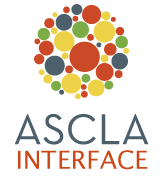By Karl E. Debus-López, President, Federal and Armed Forces Libraries Round Table
An exciting change will occur within the next year as two important units within the American Library Association will merge. In April 2017, the membership of the Federal and Armed Forces Libraries Round Table (FAFLRT) voted to merge with the Association of Specialized & Cooperative Library Agencies (ASCLA), with 76 percent of those who voted supporting the merger. The successful vote was the culmination of close to two years of ongoing work by the leaderships of FAFLRT and ASCLA, as they met and developed proposals for the organizational structure of the newly merged division.
The FAFLRT and ASCLA leaderships proposed the merger as a means to leverage the overlapping missions and commonalities of the two groups. An analysis done by the ASCLA leadership revealed that many librarians who are members of ASCLA are also members of FAFLRT, work in federal or armed forces libraries, or serve communities that are also served by federal and armed forces libraries. An example of overlap between communities is librarians that provide service to veterans who may have been disabled in combat. ASCLA has traditionally represented the needs of the disabled and the work done by librarians of the Department of Veterans Affairs is covered by FAFLRT. Another example are librarians who work in state libraries, currently supported by ASCLA, who have a similar focus and clientele to librarians who work in federal libraries, supported by FAFLRT. There are many other areas of common concern.
The merger will also provide better professional support for those who work in federal and armed forces libraries. In recent years, due to reduced budgets and reduced staffing at most federal and armed forces libraries, it has been difficult for many FAFLRT members to attend and participate at ALA conferences. The FAFLRT membership shrank to 299, and lost its separate seat on ALA Council. The diminishing membership also made it difficult for FAFLRT to ensure representation on affiliated groups, and have robust programs and services for federal and armed forces librarians.
Through the merger with ASCLA, this situation should correct itself. The merger will provide federal and armed forces librarians with more networking and educational opportunities, access to more financial resources, an enhanced ability to advocate for federal and armed forces libraries, and a dedicated staff provided by ALA. The leaderships of both groups have already agreed that two new board members will be added to the future merged entity: one representing federal libraries and one representing armed forces libraries. They are also discussing if ASCLA’s name should be changed to include “federal, “military,” or “armed forces,” or some variation on those words to show the expanded scope of the division. There will be at least two interest groups formed to represent the needs of federal and armed forces libraries. Other interest groups could be created, as well. There are also myriad administrative details that will need to be acted upon, such as merging budgets, e-mail lists, and social media sites.
A significant merger such as this takes time. The ASCLA and FAFLRT leadership will present a joint plan to the ALA Committee on Operations (COO) at ALA Midwinter 2018. Once the plan is approved, the merger will be actualized on September 1, 2018, the beginning of the 2019 fiscal year for ALA. At that point, the membership of the newly merged division can begin working together to create their shared future.
Feature Image: Joining Hands by ALA the American Library Association
